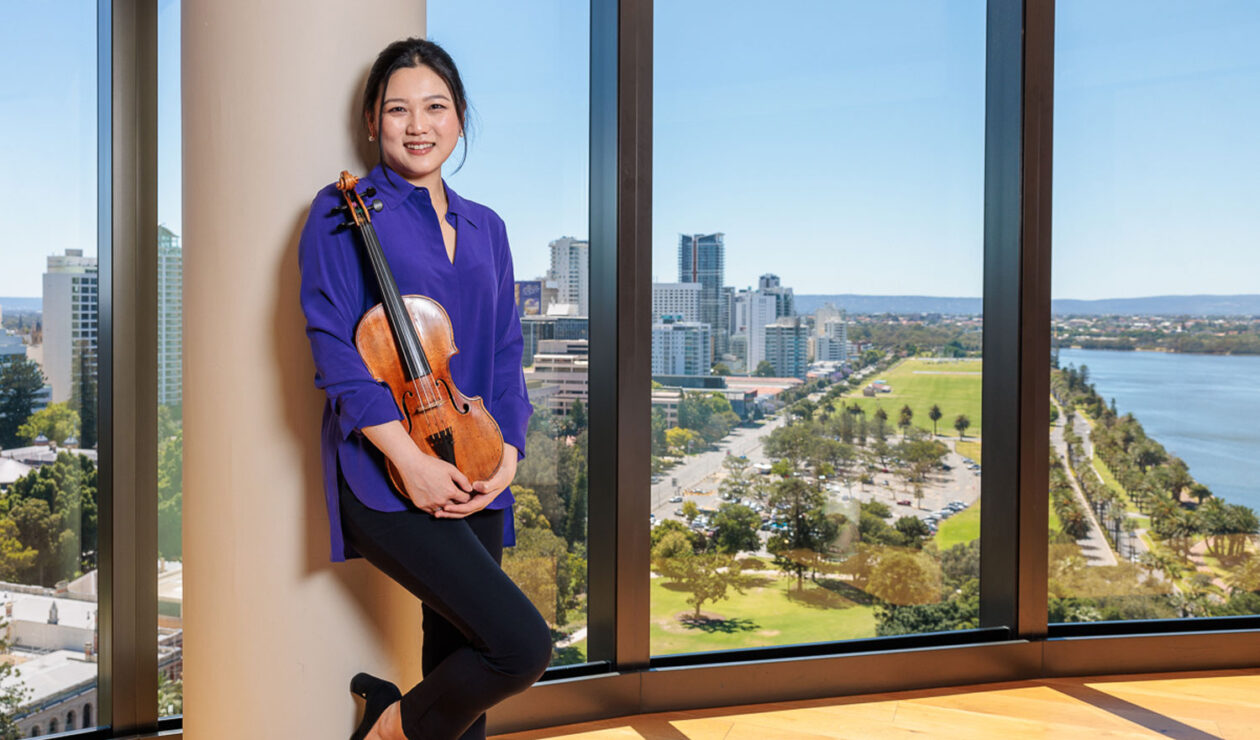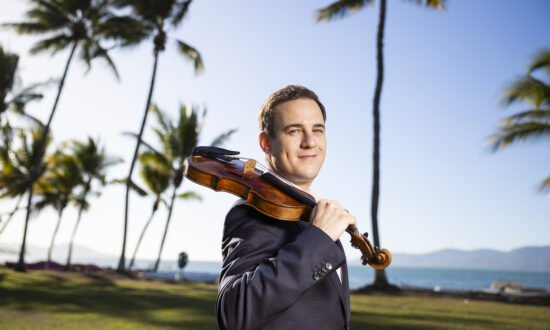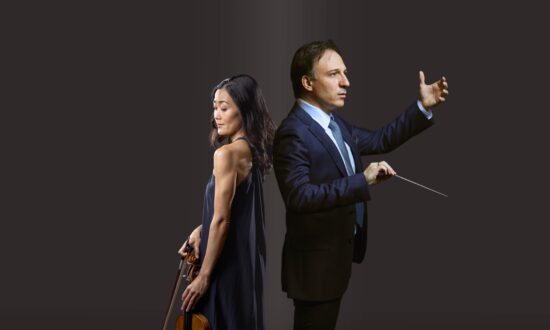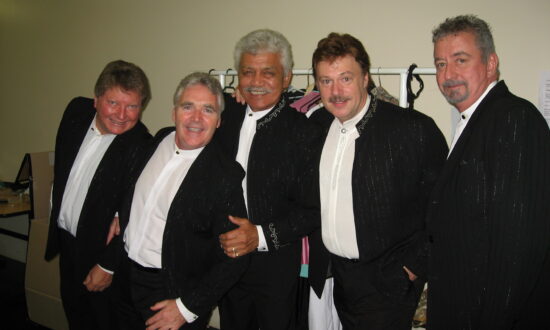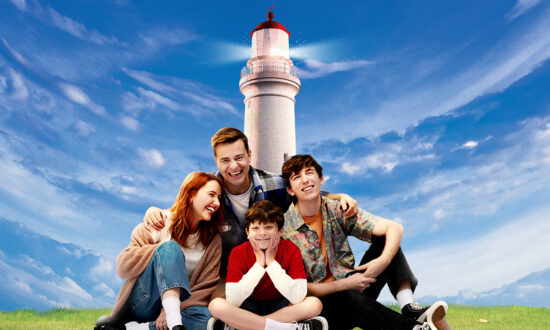“The Adelaide” has been passed onto a new pair of hands. Emily Sun, the Adelaide Symphony Orchestra’s artist-in-association, now has this wonderful amber-coloured violin made by Giovanni Battista Guadagnini in Milan in the 1750s.
For those who don’t know, the instrument has been owned by the people of South Australia since 1955, having been purchased through public subscription. UKARIA Cultural Centre currently maintains it, and oversaw its refurbishment in the Italian city of Cremona in 2015 before handing it to its previous recipient, the equally admired Natsuko Yoshimoto.
Sun has had “The Adelaide” for just six months. That’s a short time to get to know an instrument before playing it in public, but she and fellow London-based pianist Joseph Havlat agreed to present this recital at UKARIA to showcase the special instrument.
The event turned out to be a great deal more than that. We’ve heard Sun with the ASO, latterly in the Barber Violin Concerto in June, but this was the first time she has revealed the complete artist that she is. Primarily, it was down to the highly eclectic choice of music: with works by Mendelssohn to Korngold, Stravinsky and the Hungarian modernist György Kurtág (who incidentally recently turned 98), this is quite a stretch.
That was to prove the first revelation: Sun is a far more versatile musician than one might have realised from her ASO appearances.
Putting the 270-year-old violin through its paces, first it was Mendelssohn’s Sonata for Violin and Piano in F, MWV Q26. It is not his finest piece of chamber music, the composer dismissing it as a “wretched sonata” before rewriting it. Nonetheless, it places a premium on delicacy and melodic shaping that instantly sorts out a musician’s worth. Sun and Havlat gave it exceptional precision and full sonority. Sun’s burnished tone particularly reminded one of Yehudi Menuhin, the rediscoverer of this work in modern times, and whose interpretative stamp on it has remained to the present.
In truth, the sonata’s adagio is a more inspired movement, and one felt that both musicians warmed to it more. Beginning like Beethoven with hymn-like chords in the piano, it passes to the violin with a lovely singing melody. At the very end it reaches sky high, and Sun was magical here. She let the final phrase hang with a lingering beauty, and indeed her ability to create a hushed, sustained tone on the Guadagnini was to be an outstanding feature right through this concert.
The full yet clear resonance Sun is able to draw from “The Adelaide” came into its own in Kurtág’s Tre Pezzi, Op. 14e. These could not be more starkly different to the Mendelssohn. Single notes appear out of the ether, and time seems to take on a longer dimension despite the extreme brevity of each piece. Sharing an instinctive understanding, Sun and Havlat not only made total sense of them but lent them genuine beauty.
Korngold’s Four Pieces for Violin and Piano from the Incidental Music to Shakespeare’s Much Ado About Nothing, Op. 11, possess the big, open style that is immediately associated with this composer – who later made his way to Hollywood. It sure is soupy in places, but a counterbalancing finesse that Sun and Havlat also brought to it felt absolutely right. They made art out of this music while acknowledging all its comic elements. The way Sun slid cheekily from note to note using portamento, which is so much part of Korngold’s style, was just gorgeous.
Tasmanian-born Havlat is responsive pianist with a unique touch. Understated and soft-edged yet crystalline, his playing came to the fore in a new piece he composed for this concert called Old Songs: Double Image. Based on poetry by Gwen Harwood, this piece plays on the concept of time in both a geological sense and in human perception. It had a special stillness about it, and an elemental quality owing to its use of fourths as a thematic link.
Stravinsky’s Divertimento for Violin and Piano represents a more personable and candid side of the Russian composer, and the duo allowed themselves a spot of fun with its six charmingly danceable movements – it was ballet music originally, from Le Baiser de la fée (The Fairy’s Kiss). By now all ears were won over to the sheer perfection and high-flying artistry of these two musicians.

Get InReview in your inbox – free each Saturday. Local arts and culture – covered.
Thanks for signing up to the InReview newsletter.
After her short period with the “The Adelaide”, Sun is already producing miracles from it. On the back of this superb recital, one would understand if she wants to keep it forever.
Emily Sun and Joseph Havlat performed at UKARIA Cultural Centre on July 28.
Support local arts journalism
Your support will help us continue the important work of InReview in publishing free professional journalism that celebrates, interrogates and amplifies arts and culture in South Australia.
Donate Here
